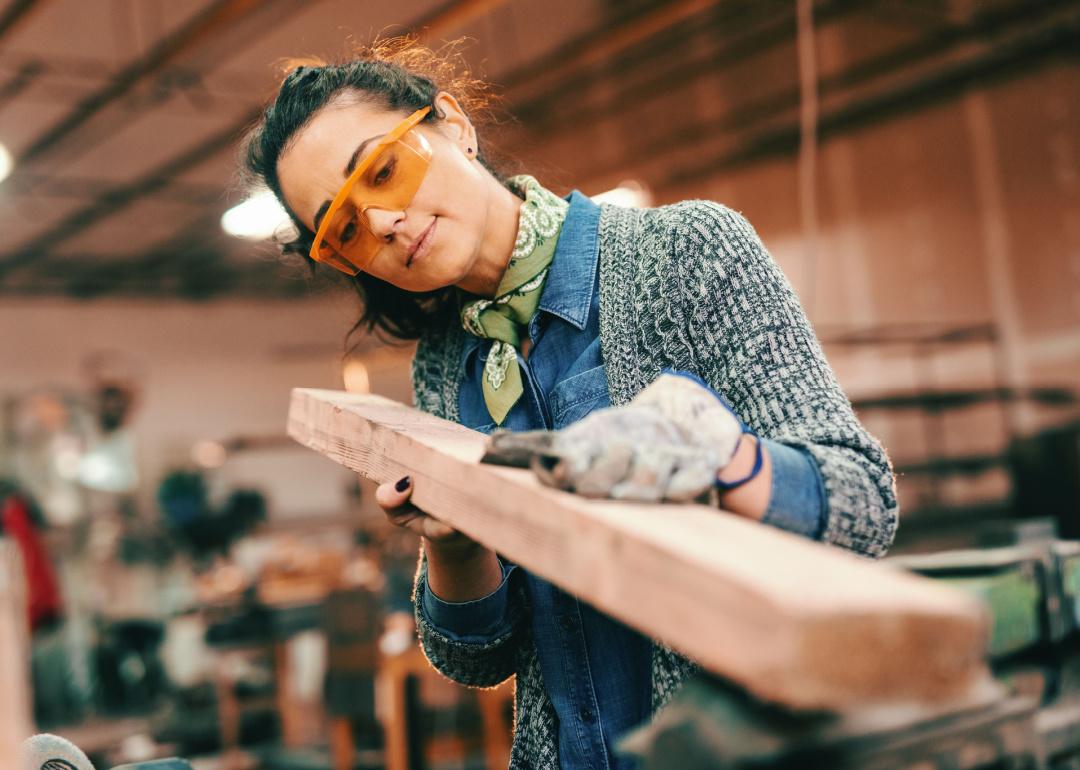
SeventyFour // Shutterstock
The most women are employed in the manufacturing industries
Female carpenter in workshop.
As far back as 1899, records of American women working in the manufacturing industry are available.
It was more affordable to pay women workers in factories back then than to hire men. Women’s presence in the manufacturing workforce surged during World War II, including making weapons and other military equipment. Following the war, many companies laid off women to make way for returning veterans. Automation was used to support and sometimes replace manufacturing workers over the years.
Even today, the manufacturing industry is still dominated by women. They account for 3 in 10 overall employees and 3 in 10. They are rarer at higher levels—2 in 10 mid-level staff, less than 2 in 10 senior-level staff, and 9 in 100 CEOs.
There are a lot of differences between the sectors. Only 17% of primary metals and fabricated products workers are women, but 50% of textiles, apparel and leather manufacturing jobs are held by women.
To better understand how women contribute to the manufacturing industry today, Get It Made collected data from the Bureau of Labor Statistics‘ 2021 Current Population Survey to rank the manufacturing industries that employ the most women. Respondents were restricted to binary gender classifications.
Diversification efforts are underway in the manufacturing industry. Some manufacturers have formal programs they use to recruit women, and the Manufacturing Institute, a workforce development company, has started the STEP Women’s Initiative to train, study, and publicly recognize the role of women in the manufacturing industry.
Manufacturing is facing a shortage of workers and women can fill the gaps. There is still room for women to fill gaps in the manufacturing industry, as well as help replace aging workers and fill technical and highly skilled positions.
Continue reading to find out more about women who work in various manufacturing industries in the U.S.
![]()

Shutterstock
#16. #16.
Protection clothing for woman who works in an industrial machine
– Total employment: 1,539,000
– Percent women: 17%
Primary metals producers refine metals from other substances to make castings, wires and rods, as well as sheets, wires and strips.
Fabricated metal products manufacturing involves the next step of turning the metal into various parts and end products. These processes include machining and forming metal parts, bending and stamping to create individual pieces of metal, and welding to join them together.
In 2021, women working in metals earned 93c for every dollar earned by men. This despite their strong skills and having held important positions.

SeventyFour // Shutterstock
#15. #15: Wood products manufacturing
Female carpenter in workshop.
– Total employment: 427,000
– Percent women: 17%
Wood product manufacturers make prefab wooden buildings, manufactured homes, wood flooring, wood trusses and wood flooring. They also produce veneers, plywood, lumber, and other wood products. Women woodworkers make 82c per dollar less than their male counterparts.
This subsector’s main production processes include laminating, shaping, planing, and sawing of wood products, as well as smoothing, planing, and assembling them.
The forest products industry employs almost 950,000 people in 45 states. It is one of the top 10 manufacturing employers. In 2019, however, just 16% were held by women in top management positions in the sector.

Gorodenkoff // Shutterstock
#14. #14
Three factory engineers discuss wearing hardhats.
– Total employment: 198,000
– Percent women: 19%
The process of producing petroleum and coal products usually involves petroleum refinement. This is done using chemical techniques like cracking and distillation. This subsector also includes establishments which further process coal and other refined materials to make products such as petroleum lubricating oil and asphalt coatings.
In 2019, the median salary for full-time, year-round positions as petroleum engineers was $138.456. For women, it was $126.712.

BearFotos // Shutterstock
#13. Manufacturing nonmetallic minerals products
Two female workers in building materials production.
– Total employment: 406,000
– Percent women: 22%
Nonmetallic mineral products manufacturers take clay, stone and gravel and turn them into finished products such as cement, ceramics and glass. The process may involve shaping, cutting, grinding, honing, and shaping. Many of these techniques involve heat and mixture, such as when making glass.
Nearly 9,000 businesses in this sector were in the U.S. at the end of 2020. Two-thirds were majority-owned in men’s favor, 12% by women and 16% by men and/or women. The remaining 6% didn’t report ownership statistics.
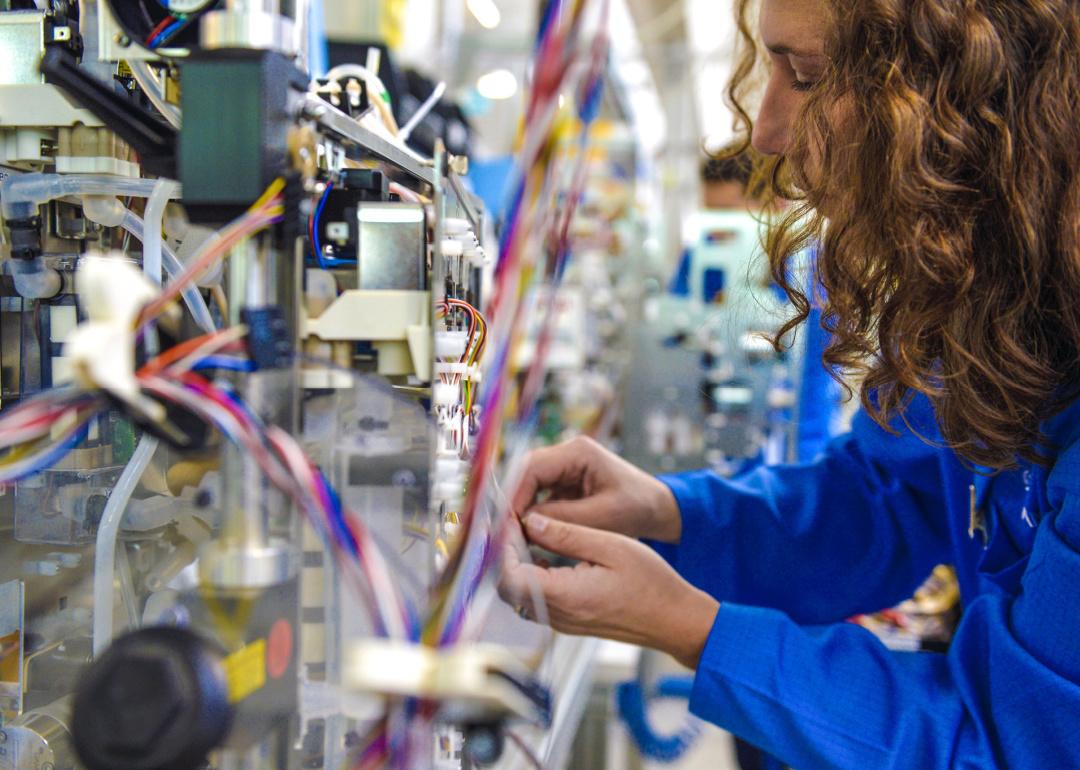
Paolo Bona // Shutterstock
#12. #12. Machine manufacturing
Closeup of a woman working on a factory assembly line.
– Total employment: 1,170,000
– Percent women: 23%
Machinery manufacturers manufacture gears and levers. Some of this industry’s main processes include machining, forming, bending, stamping, and forging to shape metal pieces, while other methods involve assembling and welding to join together various parts.
These processes are similar to those used for the fabricated metal product manufacturing subsector. However, machinery manufacturing focuses more on creating machine parts using different metal-forming operations as well as more complex assembly operations.
In the machinery manufacturing sector, there has been wage inequalities between men and women. The median wage for a year-round full-time, employed tool and die maker who was a man earned $58,378, while the median salary for a woman in the same job earned $47,200. A median salary for mechanical engineers in men was $91,189. The median salary for women engineers was $90,524.
Women are taking leadership positions in this sector. French Oil Mill Machinery, Ohio, promoted Tayte French Luz to vice-president of its custom equipment manufacturing business in August 2022.

Pressmaster // Shutterstock
#11. #11.
Two brewers examine production equipment.
– Total employment: 324,000
– Percent women: 25%
Manufacturing beverages includes the production of alcoholic and non-alcoholic beverages as well as ice. Tobacco manufacturing can include establishments that use reddish and stem tobacco as well those who make products like cigars, cigarettes, and so on.
Average annual earnings in beverage manufacturing are $65,317 for men and $62,999 respectively for women. But in tobacco manufacturing, the average woman’s salary is actually higher, at $85,493, while the average man’s salary is $81,978.
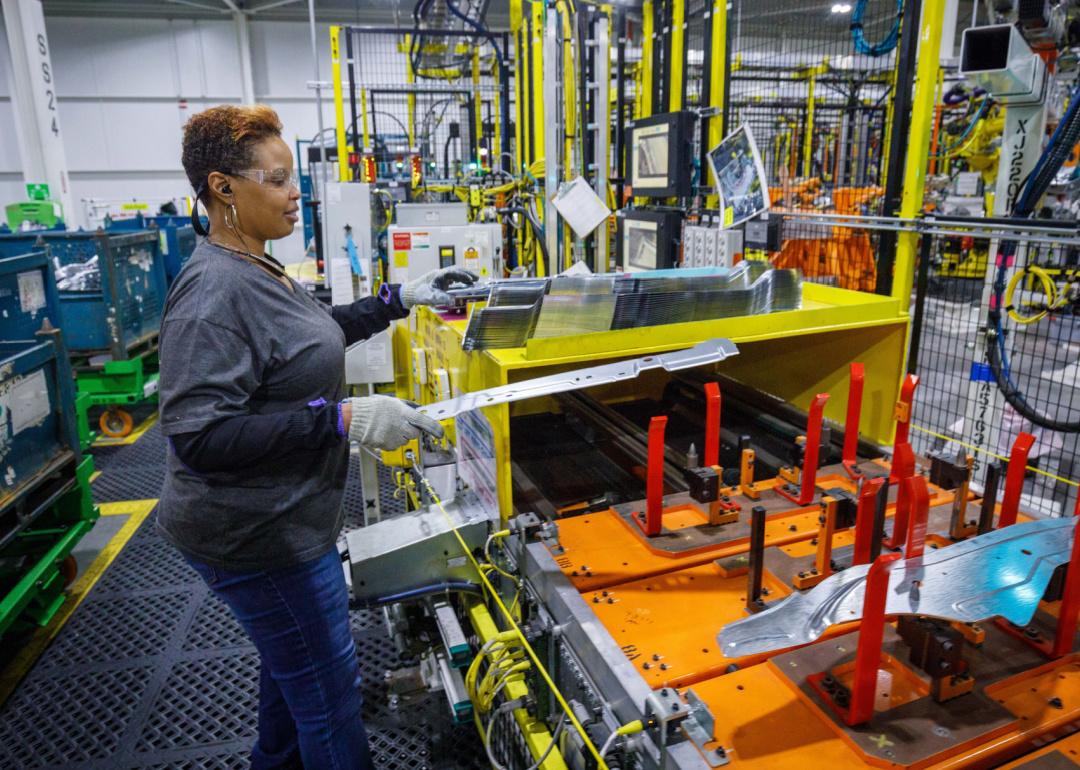
John Gress Media Inc // Flickr
#10. #10.
Auto factory: Woman makes parts
– Total employment: 2,466,000
– Percent women: 25%
Equipment manufacturers that make transportation equipment move people and goods. These processes are similar to the ones used in machinery manufacturing subsector. They include welding, forming and assembly of plastic or metal parts into finished products and components. The manufacturing of finished vehicles or other modes of transportation is the end result of the process in the transportation equipment subsector.
As is the case in manufacturing, men often make more for the same jobs within this sector than they do for women. The median income for male aerospace engineers was $112,402, which is more than $10,000 less than their female counterparts. Similar wage gaps exist among machinists. Mechanical engineers have a much smaller gap—less than $1,000.
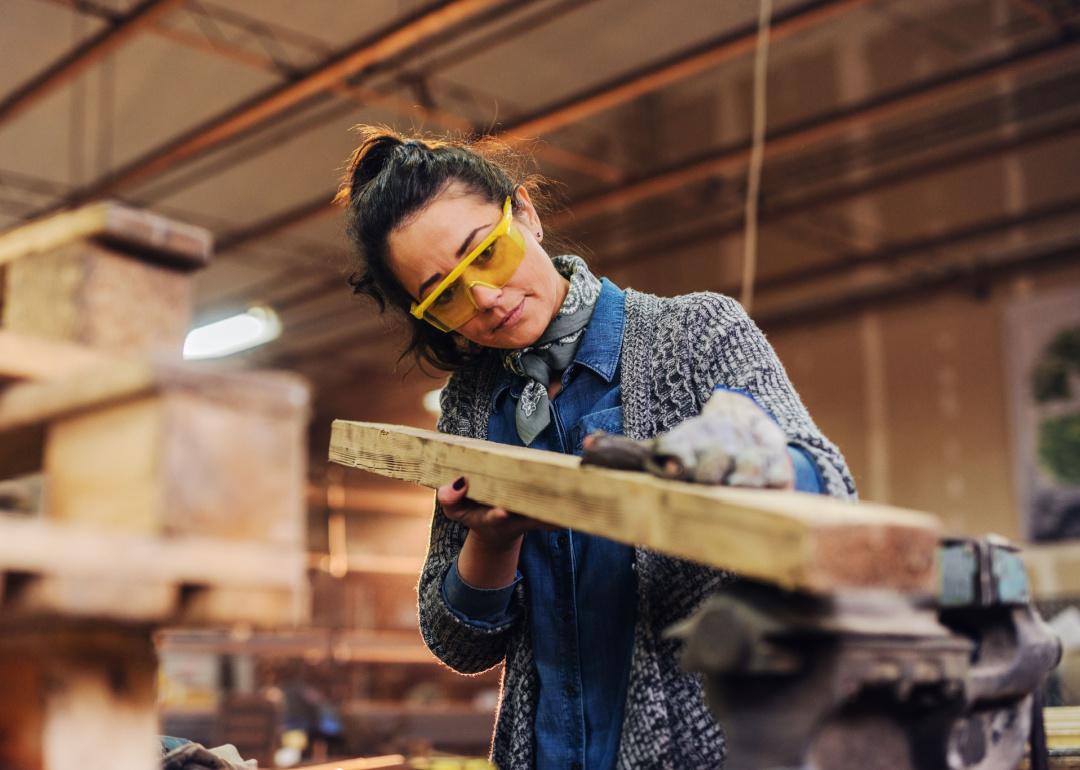
Dusan Petkovic // Shutterstock
#9. #9. Furniture and related products manufacturing
A woman carpenter chooses wood.
– Total employment: 370,000
– Percent women: 26%
Making furniture and related products—from fixtures and cabinets to window blinds and mattresses—also requires the incorporation of fashion and design trends. Manufacturers can either incorporate their design services themselves or purchase them from industrial designers.
In the furniture and related product manufacturing subsector, the average annual salary for a man is $47,798, while for a woman, it’s $45,935. Three furniture manufacturers—Ikea, Steelcase, and Williams-Sonoma—made Forbes Magazine’s list of 2022’s Best Employers for Women.

pikselstock // Shutterstock
#8. #8.
Woman working in printing factory.
– Total employment: 775,000
– Percent women: 26%
At least one of the following product types is involved in paper manufacturing subsector industry: pulp, paper, or converted paper products. Printing products such as business forms, stationery and business cards, books, newspapers, and labels are some of the jobs they do. This sub-sector includes tasks such as bookbinding and platemaking services.
Overall, the wage gap in paper manufacturing is significant. Full-time, year-round paper goods machine operators, tenders, and setters for male paper goods machines, as well as their female counterparts, earn a mean of $51,357 while their female counterparts make $32,943. Wages are nearly equal for men and women working in the printing subsector and related support activities: $55,808 per year and $55,026 per year, respectively.
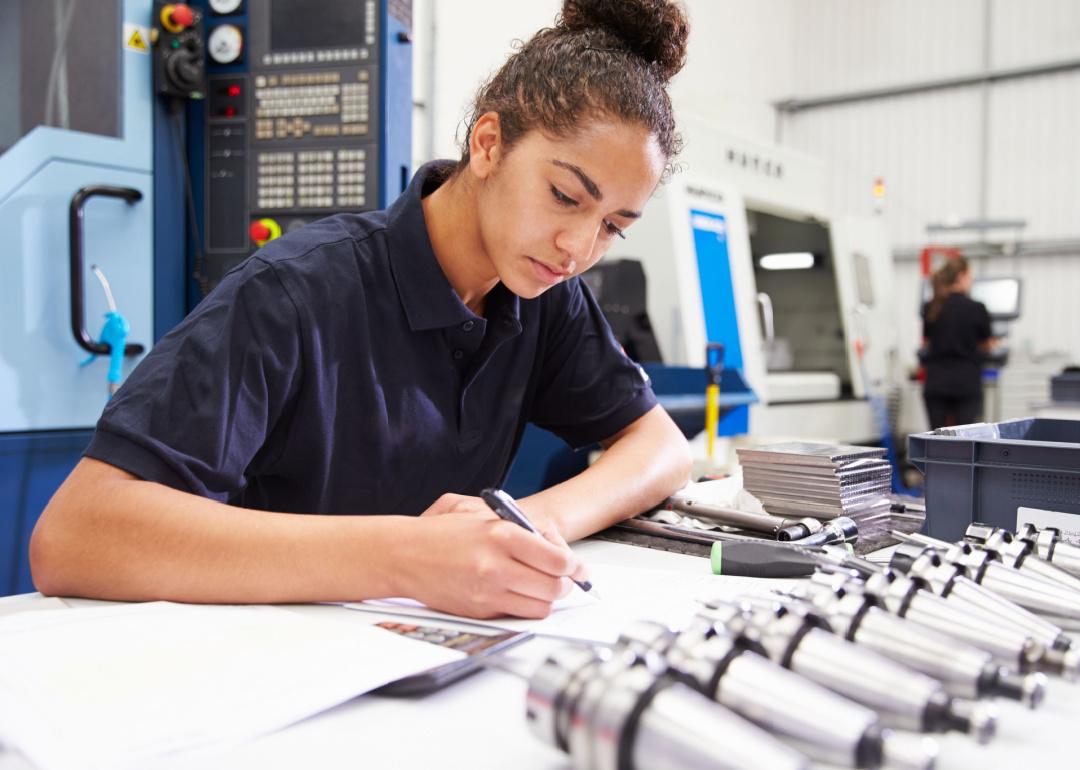
Shutterstock
#7. Manufacturing electrical equipment and appliances
With machinery in background, engineer planning project.
– Total employment: 432,000
– Percent women: 28%
Establishments in the appliance, electrical equipment and component manufacturing subsector produce and distribute electrical power. These products include household appliances such as coffee grinders, blenders, refrigerators, and deep freezes. These products also include electrical equipment like transformers, generators and electric motors.
In the early 1900s, women joined the electrical manufacturing industry to make lightbulbs and electric motors. Employers were looking for lower-wage workers as mechanization was mainly driven in part by the demand for electrical manufacturing during World War I. This often required the recruitment of women and minorities. Many of the factory jobs that had been reserved for white men became available during the two world Wars.

Gorodenkoff // Shutterstock
#6. Manufacturing of electronic products and computers
Women build circuit boards for smartphones.
– Total employment: 1,017,000
– Percent women: 29%
Computer and electronic product manufacturing subsector sectors include communication equipment makers, computer peripherals and electrical products and parts.
Although men still dominate electronics manufacturing, there are many women working in this field. In the past, when technology jobs did not pay as much as today and were considered menial, women held those jobs—only to be overshadowed by men when they became profitable.

Sata Production // Shutterstock
#5. #5.
Polymer manufacturing factory worker using tablet
– Total employment: 525,000
– Percent women: 32%
Plastics and rubber product manufacturing sub-sector businesses process raw rubber and other plastics materials to create goods.
Women made up 3 out 10 plastics industry workers in 2021. This is a significant increase from 10 years ago. But even then, according to Robin Graves—an executive search firm senior account manager at Midland Consultants who has over two decades of experience in recruitment in the rubber industry—there were “quite a few women” in the industry in 2012. They held a variety of positions, including that of presidents and chemists.
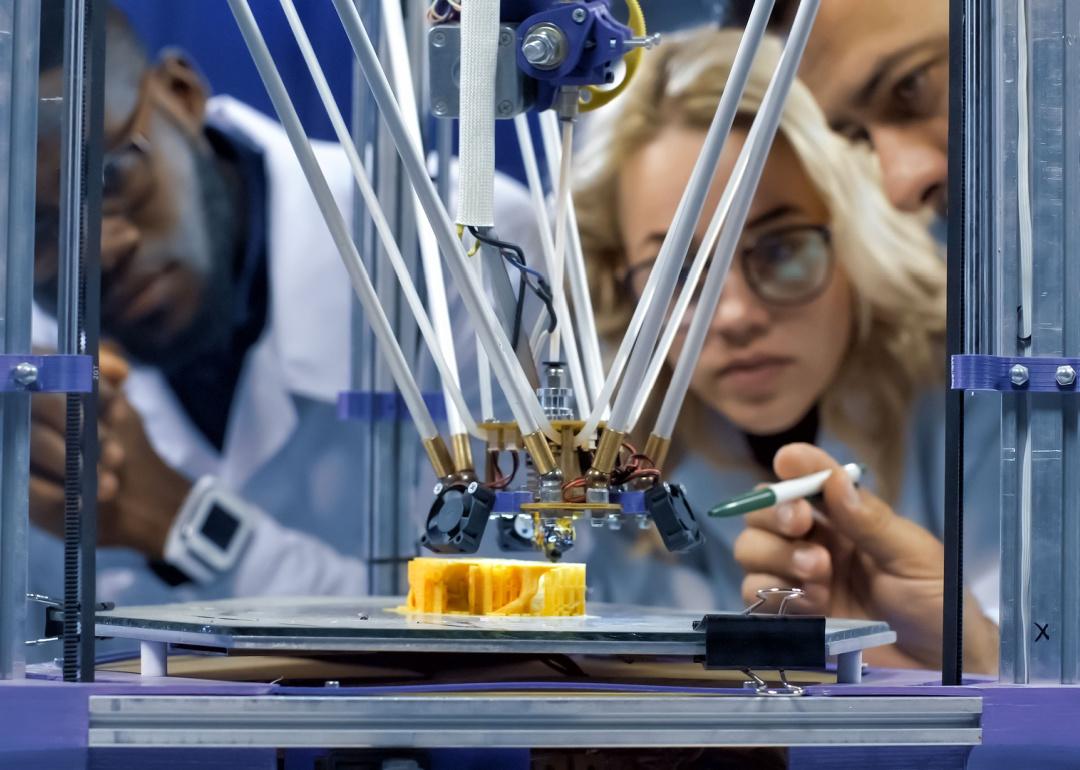
Frame Stock Footage // Shutterstock
#4. Other manufacturing
Watching model production was the focus of many who gathered around a 3D printer.
– Total employment: 1,521,000
– Percent women: 35%
Manufacturing products not classified in other Bureau of Labor Statistics categories are called miscellaneous. Examples of industries in this group include those that manufacture musical instruments, artists’ materials, dolls, caskets, silverware, and jewelry.
Women accounted for 34.7% in the workforce of this industry by 2021.

SeventyFour // Shutterstock
#3. #3.
Protection clothing worn by woman operating equipment in chemical plant.
– Total employment: 1,425,000
– Percent women: 38%
Chemical manufacturers make products from organic or inorganic raw materials. Examples of industry groups are manufacturers of paints or soaps, medicines, pesticides and resins, among others.
Women are becoming more prominent in the chemical manufacturing sector. There are support groups that exist specifically to help women in the industry, such as the Women in Specialties group of Society of Chemical Manufacturers and Affiliates and Women in Chemicals.
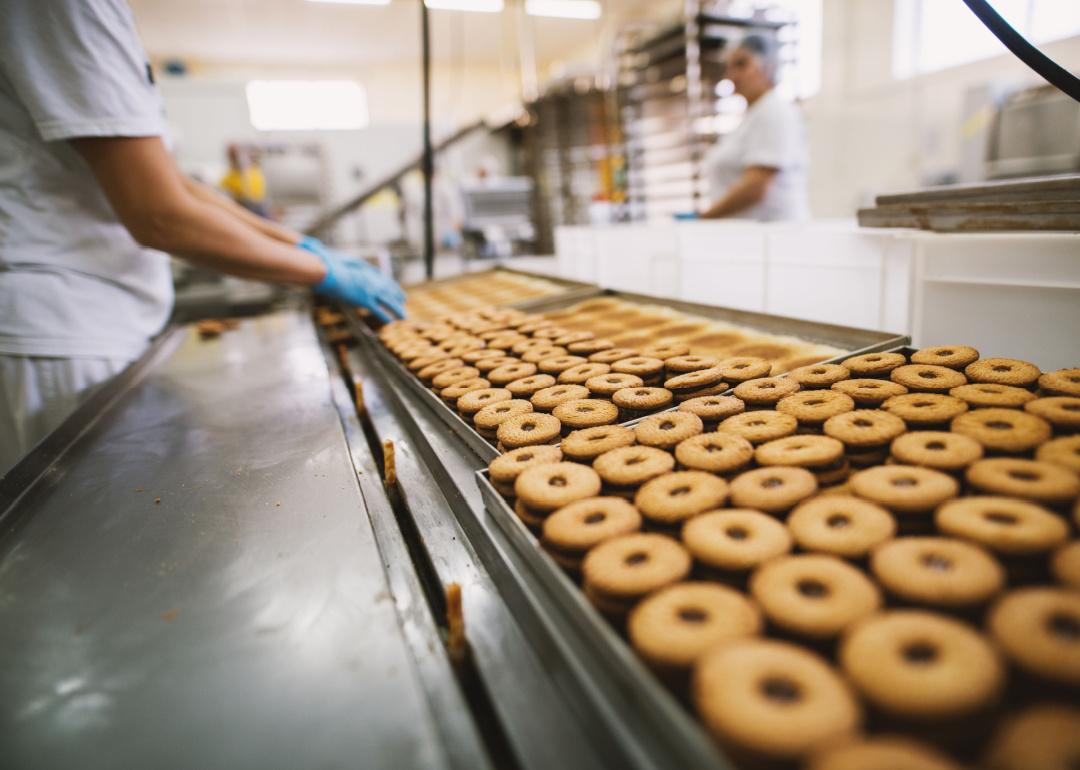
Dusan Petkovic // Shutterstock
#2. # 2. Food manufacturing
Workers at a cookie factory assembly line.
– Total employment: 1,682,000
– Percent women: 41%
Food manufacturing companies transform crops and livestock into food products that can be used in food supply chains or for consumer consumption. You can find examples of tortilla manufacturers, bakery, dairy product producers, slaughterhouses, animal feed manufacturers, and other food manufacturing companies.
Women hold fewer than 2 in 10 senior leadership positions in the food and beverage industry, according to Females in Food—even though 8 in 10 women worldwide make food-buying decisions.
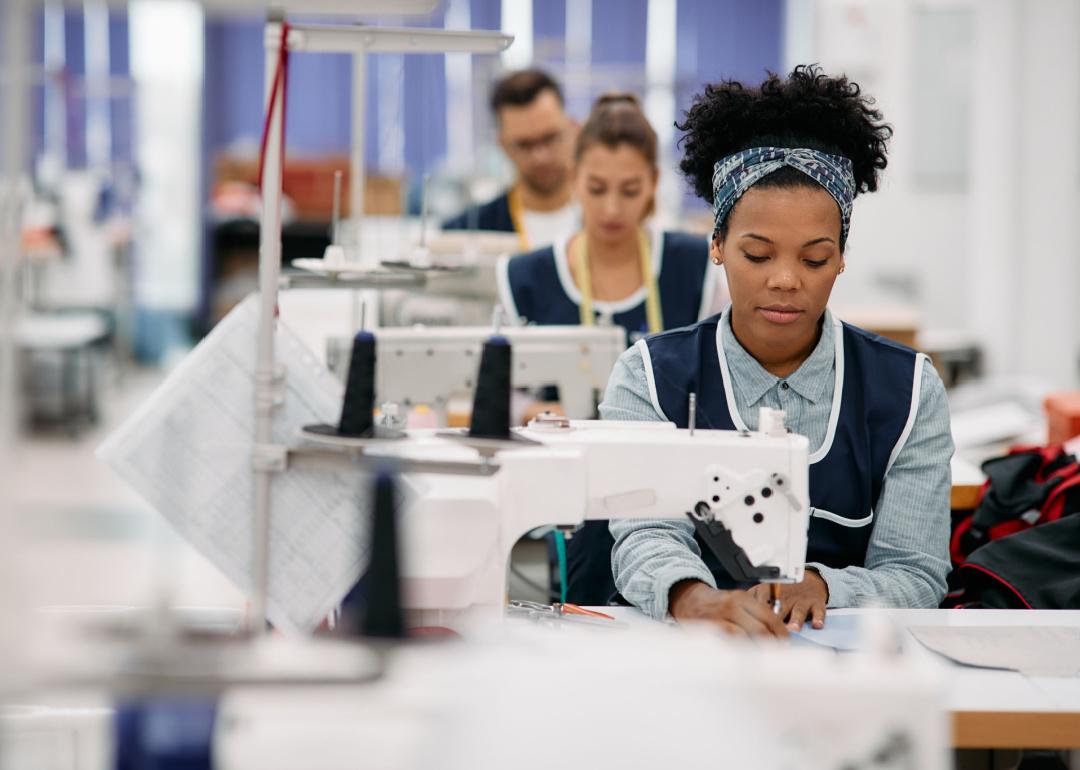
Drazen Zigic // Shutterstock
#1. #1.
A woman sews in a clothing factory.
– Total employment: 440,000
– Percent women: 51%
Textile mills transform basic fibers into products like yarn or fabric. Textile or apparel companies will then use that fabric or yarn to produce consumer items like textile bags, towels, sheets, and clothes—and, sometimes, companies might also use materials from various industries.
Textile product mills produce textile products other than apparel such as sheets and towels.
The apparel manufacturing industry is involved in two manufacturing steps: first, making the fabric and then cutting it and sewing it to make a garment. Leather and allied products manufacturing includes the creation of leather from hides and then using that leather to make final products.
In the leather tanning and finishing and other allied products manufacturing industry, men make slightly more than women, on average—with the average man’s salary being $46,088 and the average woman’s salary being $45,281. The textile, leather, footwear, and clothing sectors offer many opportunities for employment, particularly for young women.
This story was originally published on Get It Made. It was also produced.
Distributed in partnership by Stacker Studio